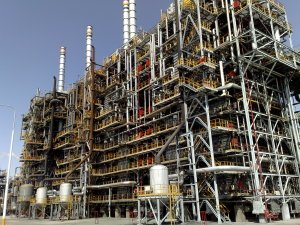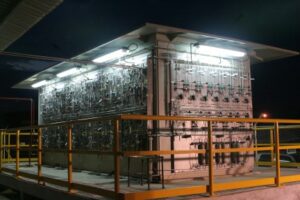Liquid Feed characterization for Ethylene Plants.
|
Naphtha quality variations are quite common and depend on the spot market imports as well as on naphthas coming from the upstream refinery. Same variations are observed on other liquid feeds such as Condensate or heavy feeds which are also used now on Ethylene plant. Such rapid feed transitions would result in significant changes in Olefins yields without continuous adaptation of plant operating conditions from process control. |
 |
Topnir provides the full set of properties from a single model and requires very light maintenance. Indeed, the following Feed parameters are measured simultaneously with the TOPNIR on-line analyser: Density, Detailed Hydrocarbon Analysis (DHA), Distillation curve, average molecular weight and Coking Factor.
The DHA gathers the percentage of Linear, Isoparaffinic, Naphthenic, Olefins and Aromatic compounds by Carbon Number. Coking Factor represents the potential of coking for any naphtha under standard conditions.
Typical benefits (based on real case history) achieved with Topnir System solutions are as follows:
The order of magnitude of profit maximization by severity optimization is 1.300 $/day per 0,01 severity point. This is the result of simulations and actual measurements. It varies with price structure, naphtha quality stability, etc.
Without an on-line TOPNIR analyzer, there is around 0,03 to 0,04 severity points shift. Thanks to Topnir on-line analyzer, this shift is saved and can lead to a benefit of 4.000 $/day.
|
 |
